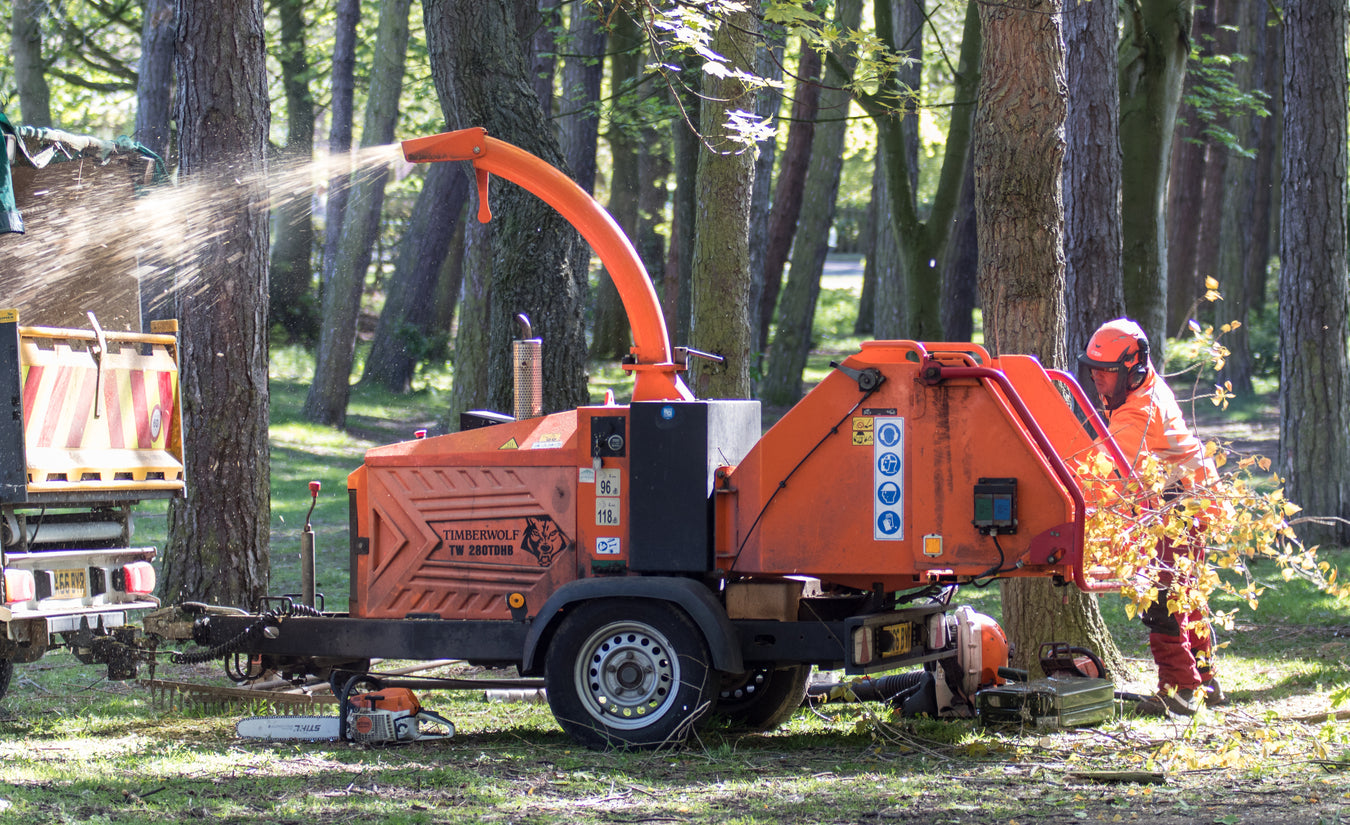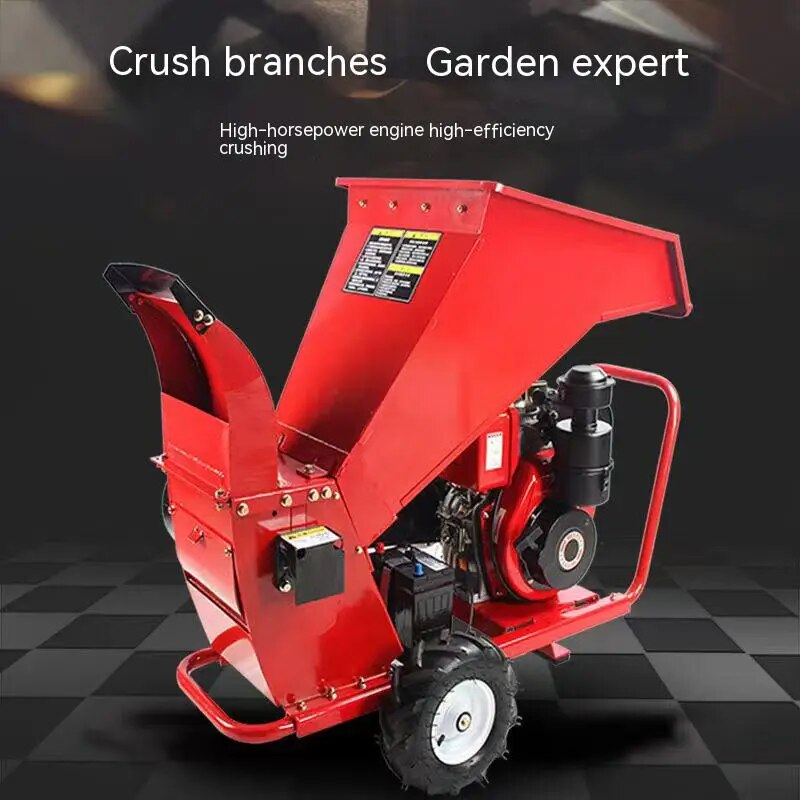To operate a portable wood chipper, always feed the thickest side first and remove any items that could get caught in the machine. Use the feed control bar to shut off the rollers immediately with your leg for hands-free stops and to reduce the risk of being caught by the rollers.
If the wood chipper is not starting, inspect the spark plug for signs of wear or damage and replace if necessary.
Efficient Use Of A Portable Wood Chipper
| Heading | Subheadings |
|---|---|
| Efficient Use of a Portable Wood Chipper |
|
A portable wood chipper is a handy tool for effectively managing wood waste. To operate a wood chipper efficiently, it is important to understand its mechanism. Feed control bars, such as enhanced feed control bars, are equipped in wood chippers to ensure safety. These bars allow operators to immediately shut off the rollers using their leg, reducing the risk of getting caught and enabling hands-free stops.
In addition to understanding the mechanism, safety precautions must be followed when operating a wood chipper. Always wear fitted clothing, button long-sleeve shirt cuffs, and remove any items that could potentially get caught in the machine, such as jewelry or belts.
Proper maintenance and care of the wood chipper are also crucial for its efficient functioning. Regularly inspect the spark plug for signs of wear or damage, and replace it if necessary. To ensure a smooth start, use a spark plug tester to check for defects. Additionally, refer to the user manual for specific maintenance guidelines.
Feeding And Operating The Wood Chipper
When it comes to feeding and operating a portable wood chipper, positioning the chipper for optimal operation is essential. Make sure that the chipper is placed on a level surface, away from any obstacles or hazards.
To load and feed the branches into the chipper correctly, always start by feeding the thickest part of the branch into the chipper first. This allows the chipper to grab onto the wood more efficiently. Avoid feeding any branches with loose bark or foliage as it may clog the chipper.
Additionally, adjusting the feed control bar is crucial for efficient chipping. The feed control bar allows the operator to control the speed and rate at which the branches are fed into the chipper. This control ensures that the chipper does not get overloaded or jammed.
Remember to follow all safety guidelines and use protective gear when operating a wood chipper. Always refer to the chipper’s manual for specific instructions and troubleshooting tips if the machine does not start or function properly.
Troubleshooting Common Issues With Wood Chippers
When operating a portable wood chipper, it is essential to be aware of common issues that may arise and know how to troubleshoot them. One reason why a wood chipper may not start is if the spark plug is worn or damaged. In this case, the spark plug should be inspected and replaced if necessary. Another tip for troubleshooting common problems is to check that the feed control bar is working properly. This bar is designed to shut off the rollers, reducing the risk of accidents. Additionally, regular maintenance and cleaning of the wood chipper are important to keep it running smoothly. This includes cleaning the blades, inspecting and replacing any worn or damaged parts, and properly lubricating the machine. By following these tips and maintaining the wood chipper, you can ensure its optimal performance and longevity.

Credit: landmarktools.com
Frequently Asked Questions On How To Operate A Portable Wood Chipper
What Does The Feed Control Bar On A Wood Chipper Do?
The feed control bar on a wood chipper allows the operator to shut off the rollers using their leg, reducing the risk of getting caught and allowing for hands-free stops. This safety feature is strategically located for immediate access.
Why Is My Wood Chipper Not Starting?
If your wood chipper is not starting, first check the spark plug for wear or damage. Replace it if necessary. Use a spark plug tester to determine if it is defective. Also, make sure the fuel tank is filled with fresh gasoline and that the fuel filter is clean.
How Do I Safely Operate A Portable Wood Chipper?
To safely operate a portable wood chipper, wear fitted clothing, remove any jewelry or belts that could get caught in the machine, and ensure the feed control bar is within reach. Always feed the thickest side of the wood first, and follow the manufacturer’s instructions for proper operation.
What Safety Features Should I Look For In A Wood Chipper?
When selecting a wood chipper, look for models with enhanced feed control bars that allow for immediate shut-off of the rollers with your leg. This feature reduces the risk of being caught by the rollers and enables deliberate hands-free stops.
Vermeer wood chippers in WA & NT are fitted with patented bottom stop feed bars with these safety features.
Conclusion
To safely and effectively operate a portable wood chipper, it is important to follow a few key guidelines. Always remember to feed the thickest side of the wood into the chipper first to ensure efficient processing. Additionally, be mindful of your clothing and remove any items that could get caught in the machine.
The feed control bar on the chipper serves as a safety feature that allows for immediate shut off of the rollers. Lastly, if your wood chipper is not starting, inspect the spark plug for wear or damage and replace if necessary.
By adhering to these safety measures, you can use a wood chipper with confidence and achieve great results.

